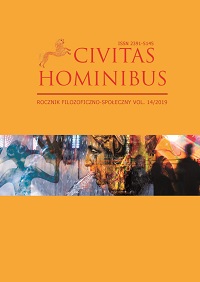The meaning of borders in post-soviet countries (on the example of Belarus and its neighbouring countries)
DOI:
https://doi.org/10.25312/Keywords:
identity, cross border cooperation, cultural identity, choice, llifestyleAbstract
The problem of identity, including the cross-border identity of people, has become one of the central concerns of social scientists due to the collapse of the bipolar world and the emergence of organisations of regional governance. Border and regions that have borders with national states belonging to different cultures and civilisations feel the most powerful influence of the border in all respects. Cross-border cooperation, which builds its own sociocultural connections “on top of” formalised borders, exists in various forms, ranging from the simplest local border contacts to cross-border and cross-cultural interaction. Very often, cross-border cooperation occurs across international borders. Accordingly, international borders and cross-border regions are designated. The geographical position and the special status of the territory create a specific socio-economic, political and socio-cultural community. The study of cross-border regions is conducted in various aspects – in geopolitical, sociological, historical, demographic, and ecological meanings.
Downloads
References
Artyukhin M., Belorusskaya nauka v usloviyakh modernizatsii: sotsiologicheskiy analiz (Belarusian Science in Terms of Modernization: A Sociological Analysis, National Academy of Sciences of Belarus), National Academy of Sciences of Belarus, Minsk 2015.
Deutsch E., Culture and Modernity: East-West Philosophic Perspectives, University of Hawaii Press, Honolulu 1991.
„Information Based on the Interactive Information Analytical System for Distribution of Official Statistical Data”. Natsional’nyy statisticheskiy komitet Respubliki Belarus’ (National Statistics Committee of Belarus), April/May 2019, http://dataportal.belstat.gov.by/AggregatedDb [access: 15.05.2019].
Izmeneniya v FZ o grazhdanstve RF i otdel’nyye zakonodatel’nyye akty (Federal Law of April 20, 2014 N 71-FZ „On Amendments to the Federal Law” On Citizenship of the Russian Federation and Certain Legislative Acts of the Russian Federation”), „Rossiyskaya gazeta”, April 23, 2014, https://rg.ru/2014/04/23/grazhdanstvo-dok.html [access: 15.05.2019].
Key Migration Terms, International Organization for Migration, March 16, 2016, https://www. iom.int/key-migration-terms [access: 15.05.2019].
Kurysheva J., The Boundaries of the Concepts of International Journalism, “Vek informatsii” (online edition) 2, no. 4(5) (2018). DOI:10.33941/age-info.com24(5)2018005.
Mezhuyev N.M., The Idea of Culture. Essays on the Philosophy of Culture, ProgressTradition, 2006, 351–408.
Migration Forecast Between the EU, the Visegrad Four Countries and Eastern Europe: Implications for the Abolition of Visa Requirements (Prohnoz mihratsiyi mizh YES, krayinamy Vyshehradsʹkoyi chetvirky ta Skhidnoyu Yevropoyu: naslidky skasuvannya vizovoho rezhymu), June 2014, 1–184, Centre for Eastern Studies, Warsaw 2014.
Migratsiya naseleniya [Migration], Natsional’nyy statisticheskiy komitet Respubliki Belarus’ [National Statistics Committee of Belarus] 2005, http://www.belstat.gov.by/informatsiyadlya-respondenta/perepis-naseleniya/perepis-naseleniya-2009-goda/vyhodnye-reglamentnyetablitsy/migratsiya-naseleniya/ [access: 15.05.2019].
Ministry of Foreign Affairs of the Republic of Belarus for Belarusians Abroad, “Law of the Republic of Belarus” of June 16, 2014, No. 162-Z
“On Belarusians Abroad”, Belorusy zarubezh’ya – Ministerstvo inostrannykh del Respubliki Belarus’, September 2014, http://mfa. gov.by/mulateral/diaspora/ [access: 15.05.2019].
Scheurle E., Stuart Hall (Hg.): Representation. Cultural Representations and Signifying Practices, Sage: London/Thousand Oaks/New Delhi 2012 [erschienen 1997], 400 S. Klassiker Der Sozialwissenschaften, 2016, 404-07. DOI:10.1007/978-3-658-13213-2_94.
Small Border Traffic (Maloye prigranichnoye dvizheniye), Migrant RU, 2019, http://www. migrant.info.pl/Малое_приграничное_движение.html [access: 15.05.2019].
Yeliseyeu A., Migration between Belarus and Poland: Current Trends and Prospects, Eurasian States in Transition, March 2018, 1–13.
Downloads
Published
Issue
Section
License
Copyright (c) 2020 Akademia Humanistyczno-Ekonomiczna w Łodzi

This work is licensed under a Creative Commons Attribution-ShareAlike 4.0 International License.

